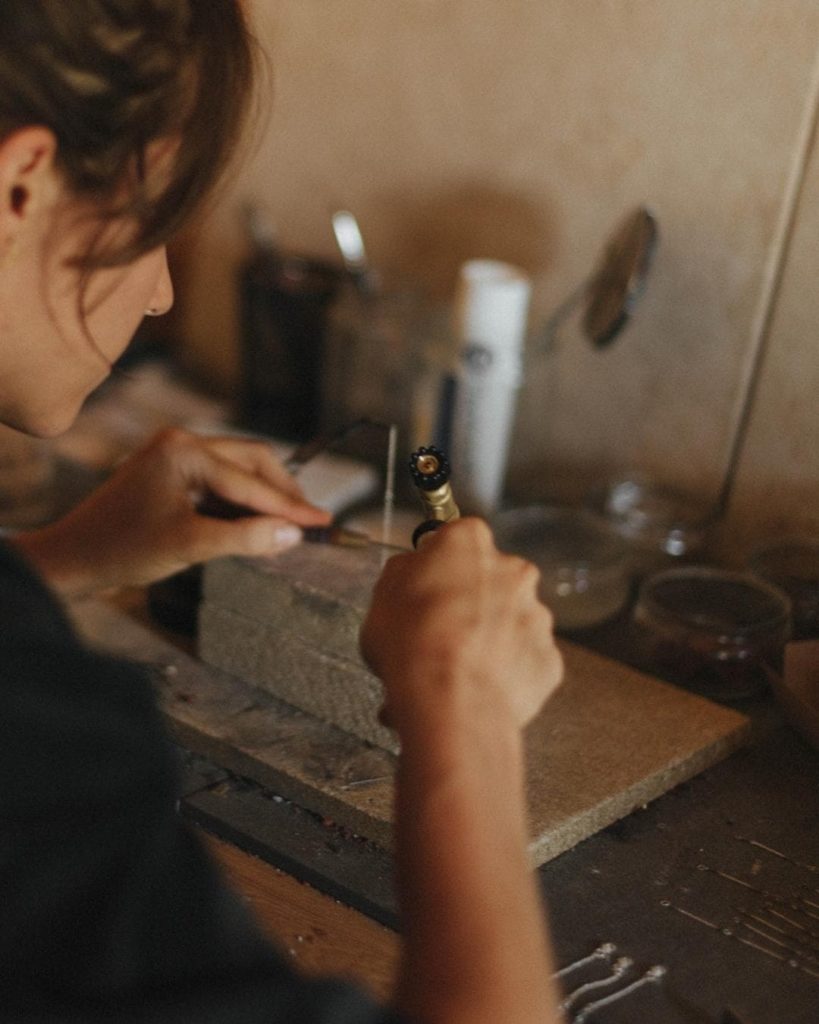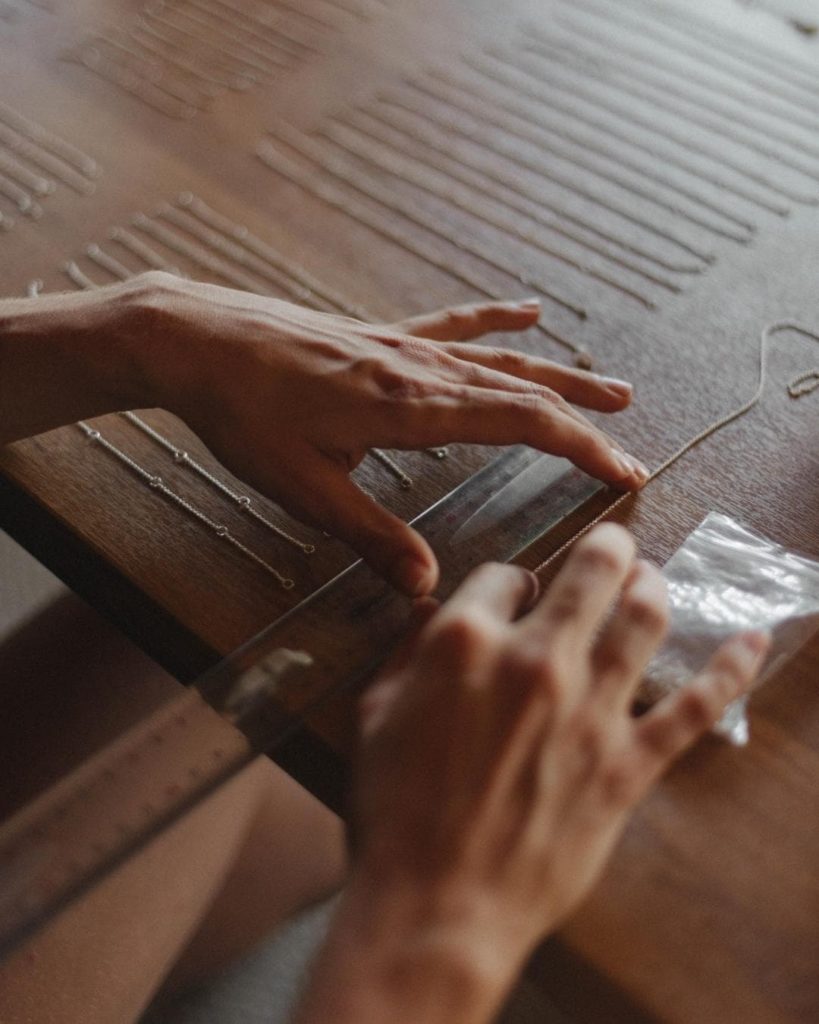La fabrication à l’atelier
Chacune des pièces Nekala est réalisée à la main à l’atelier. Nous privilégions le travail artisanal et les savoir-faire issus de la bijouterie traditionnelle. Nous passons par des artisans qualifiés réalisant chacune des spécificités de fabrication en France, notamment les techniques de prototypage, de fonte à cire perdue, de sertissage et de galvanoplastie – pour la dorure des bijoux en vermeil et la finition des bijoux en argent.
De nombreuses étapes sont également réalisées au sein même de l’atelier Nekala, notamment la sculpture de la cire, les assemblages, les soudures, le polissage et autres finitions.
La fonte à cire perdue
La technique de fonte à cire perdue est un procédé par lequel un métal en fusion vient remplacer, en le faisant fondre, un modèle en cire placé dans un moule.

Ce procédé ancien – connu au moins depuis le IVème millénaire avant J.-C., permet la réalisation de pièces complexes en un seul tenant, et permet également la reproduction de mêmes modèles.
Cette technique comprends de nombreuses étapes. D’une première maquette en cire ou en métal est réalisé un moule, dans lequel on injecte de la cire pour reproduire le modèle. Une fois les modèles devenus cire, ils sont disposés autour d’un « arbre », placé ensuite dans un cylindre en métal. On remplit ce cylindre d’un mélange plâtreux avant de le mettre au four, pour ainsi cuir le plâtre tout en faisant fondre la cire, ne laissant apparaître que les formes creuses des modèles. C’est seulement à ce stade que les bijoux sont formés, grâce à la coulée du métal dans le moule en plâtre. Chacun des modèles de l’arbre devenu métal devra être travaillé pour réalisé les bijoux finis.

Les étapes de fabrication de nos bijoux

Le prototypage
La première étape de la réalisation de nos pièces consiste à réaliser le modèle en cire afin d’aborder la technique de fonte à cire perdue. Pour ce faire, nous travaillons la cire à la main, ou utilisons un logiciel pour l’impression 3D de formes plus complexes.
Ensuite, grâce à cette technique, nous transformons la cire en métal. C’est à partir de ce prototype que l’on réalisera un moule, dans lequel nous répèterons les opérations précédentes afin de reproduire les modèles en argent massif.

Reprise de fonte et finitions
Lorsque nous recevons les pièces une fois moulées, nous procédons à leur « nettoyage ». Nous enlevons les bavures de métal, retravaillons la forme et polissons les pièces.
C’est ensuite que nous nous occupons des finitions. La plupart des pierres sont serties – celles qui peuvent supporter la dorure -, les montages sur chaînes réalisés, les perles assemblées… Nous réalisons les soudures, de nouveau du polissage… et toute autre étape nécessaire à la création complète du bijou.

Le traitement de surface
Une fois les pièces totalement finies, elles sont soumises à la galvanoplastie : le recouvrement de leur surface par une couche de métal.
Pour réaliser du vermeil, les bijoux sont trempées dans un bain d’or 18k. Pour nos bijoux en argent, bien qu’ils ne le nécessitent pas, nous les recouvrons d’une couche supplémentaire d’argent afin d’augmenter leur durabilité et pour un rendu plus éclatant.
Les pierres fines les plus fragiles sont serties une fois les traitements réalisés.

